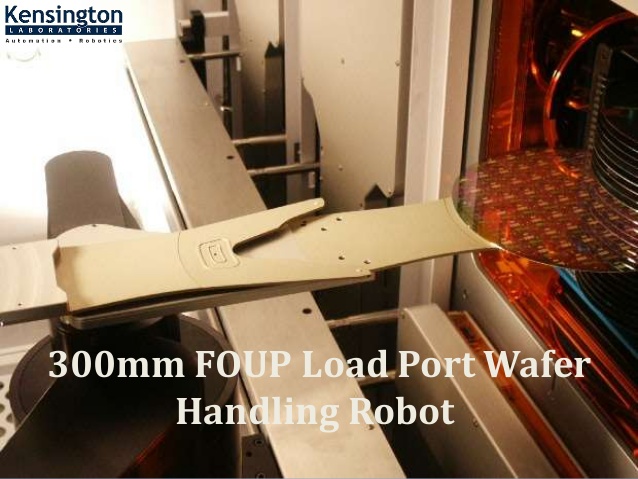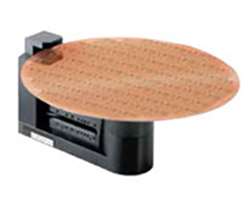Steps Used in Semiconductor Manufacturing Process!
Silicon must go through several intricate processes before it can be made into a semiconductor chip, including:
- producing wafers,
- oxidation,
- etching,
- Deposition & ion implementation,
- electronic devices,
- And packaging.
Let's examine this crucial step in manufacturing semiconductors including semiconductor front end manufacturing, and back-end manufacturing in more detail.
Silicon Wafer Manufacturing
Semiconductors are solidly piled in a complicated structure like a tall building. Building a foundation is the first step in construction. A silicon wafer serves as the semiconductor's base in a similar manner. The silicon used to make wafers is often taken from sand. The number of chips that can be generated increases with a wafer's diameter.
Oxidation
It is still necessary for the silicon wafer produced in Step 1 to be conductive. The wafers must undergo a procedure to make them semiconductive. Wafers first undergo the oxidation process. Oxygen or water vapor is blasted onto the wafer surface to create a homogeneous oxide film. This oxide film saves the wafer surface during the emerging operations and combats current leakage between circuits. The film serves as a powerful barrier to defense. The groundwork for semiconductors is now complete.
Photolithography
The following step is the photolithography process, which involves drawing a circuit design on a wafer. Because it resembles developing a photograph taken with a film camera using semiconductors, it is frequently referred to as "photo" for short. In the film, a photo mask is used. A glass substrate covered in a computer-designed circuit pattern is a photo mask. The photoresist, a substance that reacts to light, is deposited thinly and uniformly on the oxide coating previously applied to the wafer to draw the circuit.
The circuit is drawn on the wafer surface when light transfers the patterned photo mask. A circuit pattern is imprinted on the wafer by spraying, developing, and eliminating unlit portions from the sections exposed to light, much as how a photo is developed. The process proceeds to the following phase after checking the wafer to ensure the design is accurately drawn.
Etching
It is now time to clean the wafer surface of extraneous components so that only the design pattern is visible. Using a liquid or gas etching process, this is accomplished. To draw the desired design, all extraneous components are deliberately deleted.
Wet Etching
Dry Etching
If you are looking for semiconductor handling equipment such as wafer handling equipment, wafer front effector, and wafer pre aligners, etc., look no further than Kensington Laboratory.
Deposition & Ion Implementation
Deposition is applying the thin layer to a wafer at a specific molecular or atomic level. The thinness of the coating necessitates the use of precise and advanced technology to uniformly deposit the thin film on a wafer and provide the electrical properties of the semiconductor. Implementing Ion is also necessary.
Metal Wiring
Now, an electrical signal must be provided for this circuit to function. According to the circuit pattern, a passage must be made for electricity to flow through. The metal wiring procedure is what is referred to as.
Energy Dispersive Spectroscopy
EDS is the following action. This is the testing procedure used to guarantee flawless semiconductor chips. In other words, selecting the bad chips is a testing phase.
Packaging
The packaging process is the final step. Individual semiconductor chips that can be placed onto an electronic semiconductor device are cut from the wafer finished in the preceding phases.
We hope that you have an adequate understanding of manufacturing semiconductor chips.
Silicon Wafer Manufacturing
Semiconductors are solidly piled in a complicated structure like a tall building. Building a foundation is the first step in construction. A silicon wafer serves as the semiconductor's base in a similar manner. The silicon used to make wafers is often taken from sand. The number of chips that can be generated increases with a wafer's diameter.
Oxidation
It is still necessary for the silicon wafer produced in Step 1 to be conductive. The wafers must undergo a procedure to make them semiconductive. Wafers first undergo the oxidation process. Oxygen or water vapor is blasted onto the wafer surface to create a homogeneous oxide film. This oxide film saves the wafer surface during the emerging operations and combats current leakage between circuits. The film serves as a powerful barrier to defense. The groundwork for semiconductors is now complete.
Photolithography
The following step is the photolithography process, which involves drawing a circuit design on a wafer. Because it resembles developing a photograph taken with a film camera using semiconductors, it is frequently referred to as "photo" for short. In the film, a photo mask is used. A glass substrate covered in a computer-designed circuit pattern is a photo mask. The photoresist, a substance that reacts to light, is deposited thinly and uniformly on the oxide coating previously applied to the wafer to draw the circuit.
The circuit is drawn on the wafer surface when light transfers the patterned photo mask. A circuit pattern is imprinted on the wafer by spraying, developing, and eliminating unlit portions from the sections exposed to light, much as how a photo is developed. The process proceeds to the following phase after checking the wafer to ensure the design is accurately drawn.
Etching
It is now time to clean the wafer surface of extraneous components so that only the design pattern is visible. Using a liquid or gas etching process, this is accomplished. To draw the desired design, all extraneous components are deliberately deleted.
Wet Etching
Dry Etching
If you are looking for semiconductor handling equipment such as wafer handling equipment, wafer front effector, and wafer pre aligners, etc., look no further than Kensington Laboratory.
Deposition & Ion Implementation
Deposition is applying the thin layer to a wafer at a specific molecular or atomic level. The thinness of the coating necessitates the use of precise and advanced technology to uniformly deposit the thin film on a wafer and provide the electrical properties of the semiconductor. Implementing Ion is also necessary.
Metal Wiring
Now, an electrical signal must be provided for this circuit to function. According to the circuit pattern, a passage must be made for electricity to flow through. The metal wiring procedure is what is referred to as.
Energy Dispersive Spectroscopy
EDS is the following action. This is the testing procedure used to guarantee flawless semiconductor chips. In other words, selecting the bad chips is a testing phase.
Packaging
The packaging process is the final step. Individual semiconductor chips that can be placed onto an electronic semiconductor device are cut from the wafer finished in the preceding phases.
We hope that you have an adequate understanding of manufacturing semiconductor chips.




Comments
Post a Comment